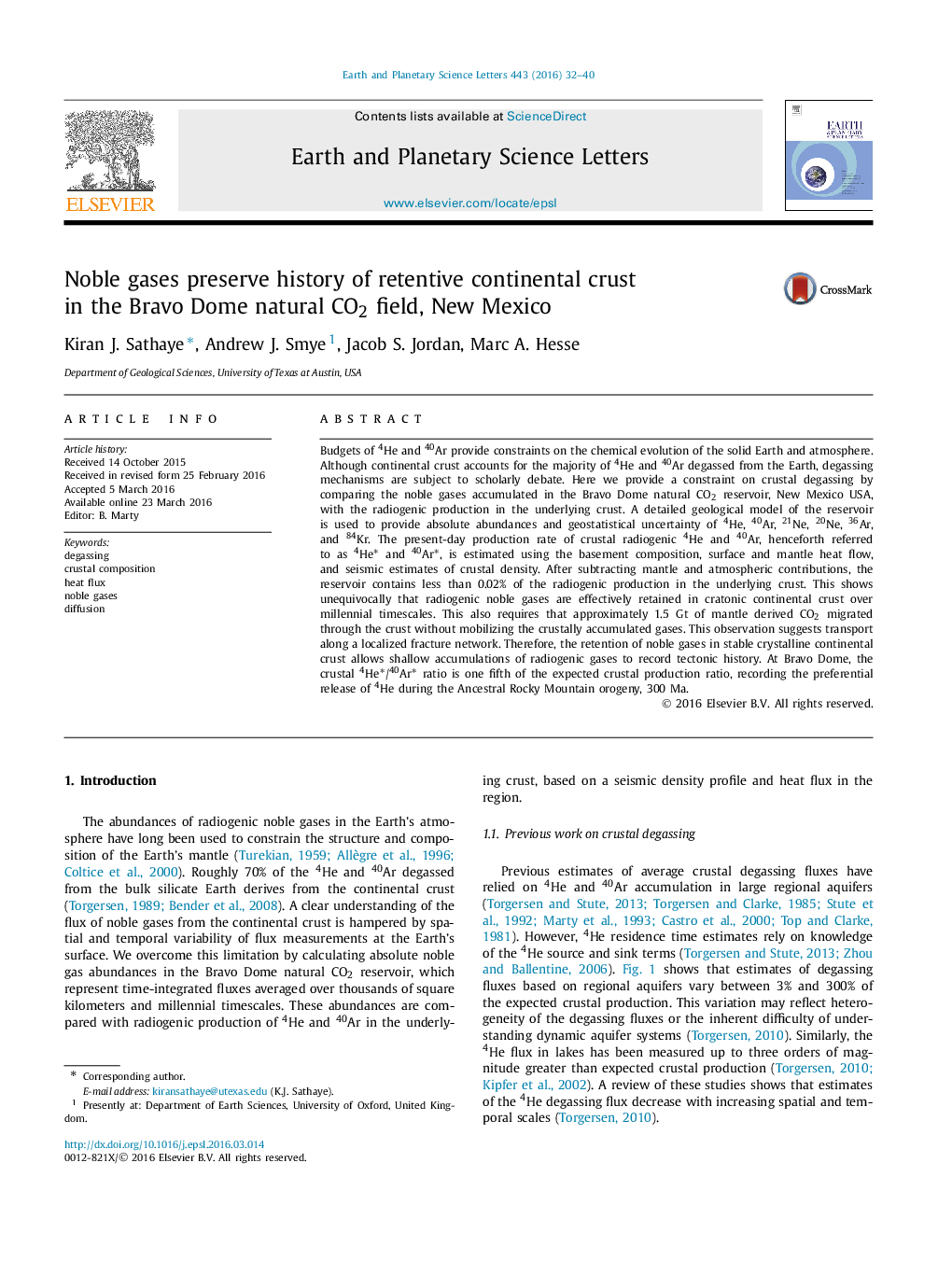| Article ID | Journal | Published Year | Pages | File Type |
|---|---|---|---|---|
| 6427420 | Earth and Planetary Science Letters | 2016 | 9 Pages |
â¢Noble gases are retained in stable continental crust.â¢Crustal radioactive content can be inferred from heat flux measurements and seismology.â¢NE New Mexico radioactive content is much lower than global average values.â¢Natural gas accumulations can be used as a record of crustal degassing.
Budgets of 4He and 40Ar provide constraints on the chemical evolution of the solid Earth and atmosphere. Although continental crust accounts for the majority of 4He and 40Ar degassed from the Earth, degassing mechanisms are subject to scholarly debate. Here we provide a constraint on crustal degassing by comparing the noble gases accumulated in the Bravo Dome natural CO2 reservoir, New Mexico USA, with the radiogenic production in the underlying crust. A detailed geological model of the reservoir is used to provide absolute abundances and geostatistical uncertainty of 4He, 40Ar, 21Ne, 20Ne, 36Ar, and 84Kr. The present-day production rate of crustal radiogenic 4He and 40Ar, henceforth referred to as 4Heâ and 40Arâ, is estimated using the basement composition, surface and mantle heat flow, and seismic estimates of crustal density. After subtracting mantle and atmospheric contributions, the reservoir contains less than 0.02% of the radiogenic production in the underlying crust. This shows unequivocally that radiogenic noble gases are effectively retained in cratonic continental crust over millennial timescales. This also requires that approximately 1.5 Gt of mantle derived CO2 migrated through the crust without mobilizing the crustally accumulated gases. This observation suggests transport along a localized fracture network. Therefore, the retention of noble gases in stable crystalline continental crust allows shallow accumulations of radiogenic gases to record tectonic history. At Bravo Dome, the crustal 4Heâ/40Arâ ratio is one fifth of the expected crustal production ratio, recording the preferential release of 4He during the Ancestral Rocky Mountain orogeny, 300 Ma.
